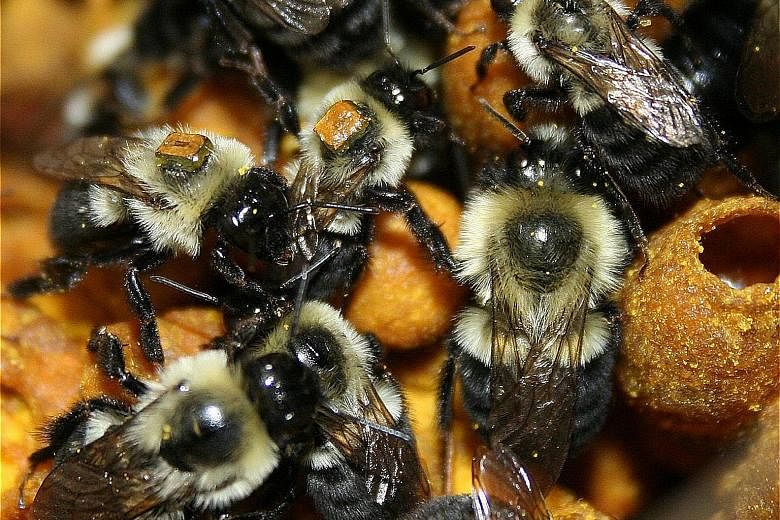By tagging bumblebees with tiny microchips, biologists have uncovered some previously unknown insights about the lives of these busy workers.
Researchers from the University of Arizona found that while most bumblebees (Bombus impatiens) collect both pollen and nectar over the course of their lifetime, there are others that tend to collect only one of the two during any given day.
The study wanted to better understand the role that these bumblebees play as pollinators. Many aspects of their biology still remain a mystery, said the university in a statement. And so by placing a radio frequency identification, or RFID, tag - similar to the ones used to protect merchandise from shoplifters - researchers were able to keep tabs on the bees at all times. The data collected could also be logged automatically.
"The way these studies have typically been done requires a human observer sitting in front of a hive entrance and taking notes all day, and nobody wants to do that," said lead author of the study Avery Russell, a doctoral student in entomology and insect, from the University of Arizona's Department of Ecology and Evolutionary Biology. The study was published recently in the science journal Scientific Reports.
"With the RFID chips, we can track every nectar- and pollen-collection trip made over each worker's lifespan and a portion of the colony's lifespan," added Mr Russell.
Once a bumblebee queen has mated, she burrows into the ground. The following spring, she emerges and starts a hive that lasts until the autumn. A typical bumblebee colony grows to about 75 workers, with about 40 to 50 going out and foraging on flowers for nectar and pollen. After the colony's growth phase, the colony produces unfertilised eggs that hatch into males. The male bumblebees then disperse in search of other unmated queens to begin the cycle anew.
"Each individual bee lives only between two weeks and a month at the most," Mr Russell said, "and even though they behave as generalists over their lifetime, our study showed that they tend to specialise in one food source over the course of a foraging day."

